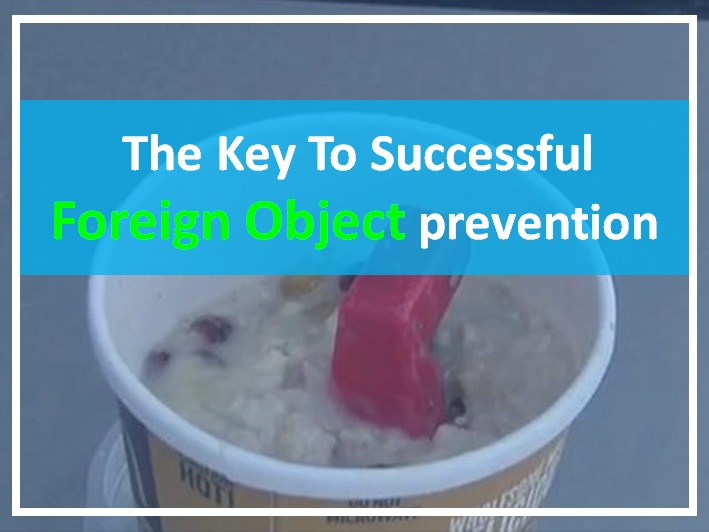It is important to understand what foreign object or objects is / are present in food. 2018 was a record year for food recalls related to foreign objects: there was one case per week on average, according to worldwide data from Horizonscan. In absolute numbers, these types of food contamination cases are less frequent than Salmonella or E.coli, but the negative impact for food businesses size wise can be equally high and also for large companies. In 2018 the discovery of a piece of metal in ready-to-eat chicken led Wayne Farms to recall 439,000-lbs (about 20 tons) of product. In 2016, Mars recalled chocolate products in 55 countries (most of them in Europe), after a consumer found a piece of red plastic in a Snickers bar.
Understanding foreign objects
Foreign objects can be divided in different categories according to three main W’s.
The What. Depending on the type of material, a foreign object can be endogenous to the food (like stones, pits and stalks), or exogenous (like glass, metal, wood, or insects).
The When/Where. Like any contamination, foreign objects may come into contact with food at any step of the supply chain. For a food business, a crucial aspect to determine is whether the contamination happened in the processing plant, upstream (suppliers), or downstream (retailers, food processors or even the consumers’ home).
The Why. Although most foreign object contaminations are unintentional, intentional sabotages do happen. One of the most serious cases in 2018 involved needles found in strawberries in Australia. Food businesses must therefore include the likelihood of sabotage in their management plan.
Despite these differences, all foreign object contaminations have two basic characteristics in common. The object is not expected to be there. Expectations in this case are determined by the consumers’ general knowledge and the description on the label. For example, olive pits would be considered normal in unpitted olives or a foreign object if the olives were sold as pitted. Also, they must be tangible. By definition, no type of contamination is supposed to be present in the food. What distinguishes a physical object from – for example – chemical residues is that they’re tangible and visible.
How foreign objects are regulated
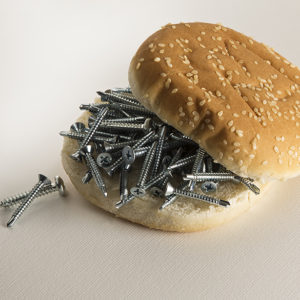 One would be hard pressed to find a list (even a non-exhaustive one) of possible foreign object contaminants in the EU and US regulations.
One would be hard pressed to find a list (even a non-exhaustive one) of possible foreign object contaminants in the EU and US regulations.
Indeed, the EU law is quite generic about them. The only meaningful reference is included in Regulation 178/2002 about the general principles of food safety. Here, the presence of ‘extraneous matter’ is explicitly mentioned as one of the reasons of contamination that can make the food fit or unfit for human consumption. However, the regulation provides no clear definition or example. Foreign objects are also mentioned in article 1 of Regulation No 315/93 about the procedures for contaminants in food, but only to exclude them from its scope.
The FDA, on the other hand, is much more detailed. In CPG Sec. 555.425, food is considered adulterated if it contains:
- a hard or sharp object between 7mm and 25mm in length in ready-to-eat food, whenever the product requires minimal preparation or further processing, which would not (or may not) eliminate the foreign object;
- any object of any length up to 25mm, in food intended for special groups such as infants, surgery patients, and the elderly.
The 7mm-threshold is based on the evaluation of several cases of foreign object contaminations, which determined that objects below 7mm rarely cause injuries to individuals not in the special-risk group. Hard or sharp objects longer than 25 mm will also be investigated by the authorities, but in general they do not lead to immediate product recalls.
How to set up an efficient foreign object risk management program
An effective risk management program for foreign object contamination has three working parts.
Prevention: its objective is to prevent foreign object contaminations.
Detection: its objective is to detect any foreign object contamination occurring in the processing plant, before the finished product is distributed.
Investigation: once a foreign object contamination does happen, the purpose of investigation is to find out exactly what caused it and how it happened.
Foreign object prevention risk assessment
Prevention is the most important of the three. Preventative measures should be based on a risk assessment, where the main questions are: what foreign objects are more likely to contaminate food, and where are they likely to come from?
In order to conduct a thorough risk analysis, food businesses will have to look at each step of their supply and processing chains and ask a series of key questions.
Suppliers
Do they have a foreign object management program in place?
What is the overall efficiency of their HACCP program?
Do they have steps in place which are specifically designed to eliminate the risk of foreign objects? If yes: what is the performance at these steps?
Do they have any history of compliance issues with this type of contamination?
What is their score rating? (if available)
Receipt of goods
What foreign objects are more likely to contaminate ingredients during transportation?
Did the packaging of incoming goods arrive intact?
Did personnel receive clear procedures and proper training on what checks to perform on incoming goods?
Storage and internal movements of goods
What is the likelihood of open product bags being contaminated by fragments of pallets, damaged packaging or other materials during storage and internal movement operations?
Processing and packaging
Are there elimination steps in the processing line, like the use of camera inspection systems, metal detectors, X-ray scanners, air jets or sieves? Do they function properly? Are they validated?
Is there a control in place to prevent contamination by product opening remnants coming from packaging?
Processing environment and equipment
Is there a monitoring procedure in place to ensure that no contamination comes from the processing environment surrounding food, such as walls, windows, ceiling, lamps, switches, etc.?
Is there a pest control program?
Is there a monitoring procedure to avoid contamination due to wear and tear of processing equipment? (for example, with pieces of metal, screws or paint.)
Are there clear procedures to ensure that no work and repair tools are left behind during maintenance and repairs?
People
What is the risk of intentional contamination coming from inside the plant?
Do suppliers include intentional adulteration in their foreign object management program?
Are work clothing and protection suitable for preventing involuntary contamination by personnel?
Is there a clear policy for carrying or wearing personal objects (such as earrings, hairclips, or bracelets) while in the processing plant?
How is such policy monitored and verified?
Prevention and foreign object detection methods
There are many different methods that can be used to prevent foreign objects from entering the processing line or detecting them when they are already in. None of them, however, will be effective in all situations, which is why it is important for assessing when and why foreign object contamination is more likely to happen and with what materials. Although prevention and detection are different steps with different objectives, their methods overlap significantly and can effectively be used for both. What makes each one belong to one step or the other is whereabouts in the process it is employed.
Sieving
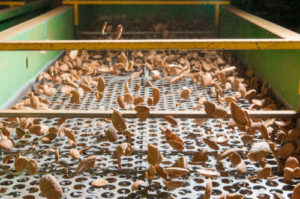
Just cracked almonds in the sieving lift for the separation of the seed from the shell
Sieves are best placed before raw ingredients or intermediate preparations enter the processing line. Their efficacy, however, will depend on a few factors.
The size of the mesh opening. It must be wider than the filtered particles by a specific ratio in order to let the product flow through the sieve, but also small enough to block undesired materials.
The shape of the foreign objects. Spherical particles and regular, compact forms are easier to sieve, while long and narrow objects may or not remain trapped depending on their position.
The size of food particles. Those with a size below < 100 µm (1/10th of millimetre) will not be suitable for sieving, as they will tend to lump together due to adhesive forces, remaining trapped in the mesh.
The electrostatic behaviour of the bulk. When they are electrically charged, particles of foodstuff tend to stick to surfaces but also to plastic foreign objects (one typical example would be whey powder). Other than making sieving less effective, it also poses a risk of dust explosions.
Product moisture. With high humidity, particles will tend to lump together and clog the sieve.
Whenever the throughput of a sieve is reduced by these external factors, a possible solution is the use of mechanical or manual (with a hammer for example) vibrations. The downside to this, however, is that pieces of material with a long and narrow shape may still pass through the sieve if positioned lengthwise. Vibration tables are typically used to compact or remove air from materials, but they can also be used as gravitational sorters by placing them under a slope: heavier materials will take a different path than lighter ones and therefore product can be segregated. In the case of liquids, one the main aspects to consider will be viscosity, which will determine the pressure drop over a sieve, which in turn may ‘push’ foreign objects with an irregular shape through the sieve openings.
Rare-earth magnets
Permanent magnets can be an effective way to capture metal foreign objects at any stage of the production line, from receipt of incoming goods to the finished product. The advantage of magnets over sieves is that the size of the object is not relevant. The monitored products, however, should have no magnetic properties. Products packaged in aluminium, for example, would not be suitable for this method. The flux of products and materials passing through the magnet (for example the speed of the conveyor belt) must be appropriate to the strength of the magnet and the type of foreign objects that may be found. Next to this, it is important to have a cleaning step in place for these magnets (whether automated or manual) as foreign object accumulation on them can significantly reduce their effectiveness.
Gravitational sorting by water baths
This common household practice of washing fresh produce can also be quite effective in a processing plant against foreign objects. Sand will of course dissolve in a (turbulent) water bath, heavy foreign bodies will sink to the bottom of the bath, and lighter objects will float on top.
Metal detectors
In principle, metal detectors work with all types of metals, although they are more effective with ferrous metals (like iron) than non-ferrous metals (like brass, copper, zinc and aluminium or non-magnetic stainless steels), as the latter have less conductivity. Metal detection will not be effective with plastic or glass, or with quality defects on products (for example, broken skin on fruit). The position of the fragment is also important and works in conjunction with the type of metal. If the foreign object is positioned lengthways, ferrous metals like iron will be detected more easily. By contrast, an upright or horizontal position will favour non-ferrous metals. Food products with high conductivity will also detract from a metal detector’s efficacy. Conductivity will depend on several factors such as: moisture, salt content, texture, composition, temperature, product quantity and dimensions, and packaging materials.
X-ray detection
X-ray scans can effectively complement magnets and metal detectors, as they also detect non-ferrous materials. The most important variable in this case will be the density of the foreign object, which must be higher than the product’s. For example, hairs, cherry stones, or insects cannot be detected, while iron, glass steel, bones etc. are detectable in most cases.
Optical sorting
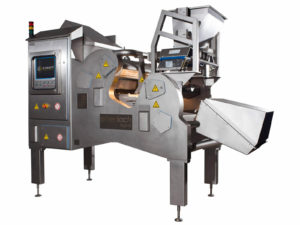 Optical sorting can be quite effective in cases where the foreign object is external to the food. This method uses light or laser beams on food and activates the rejection system whenever an object has a different reflection. It best suits food that is unpackaged, dry and solid (for example nuts or seeds), and when the foreign object is external to it.
Optical sorting can be quite effective in cases where the foreign object is external to the food. This method uses light or laser beams on food and activates the rejection system whenever an object has a different reflection. It best suits food that is unpackaged, dry and solid (for example nuts or seeds), and when the foreign object is external to it.
Camera-based systems
Cameras can detect any anomalies in colour, size and shape. They work with colours within the visible range or with invisible spectrums like Infrared (IR) or ultraviolet (UV).
Product Ejection Systems
All detection systems are fitted with a so-called project ejection system (e.g. air nozzles or small levers to blow or push foreign objects out of the stream). The product ejection system is an integral part of the detection system and needs to be properly controlled and validated to ensure proper operation. All too often these ejection systems receive less priority and attention and as a result a foreign object might not be expelled from the product stream, although it gets detected.
Validation & Verification
For all the above methods for prevention and detection, validation of the method at hand is of course a crucial step. Without proper validation the user cannot be sure that the chosen method is effective. Next to validation, frequent verification activities are often also needed to ensure that the method is still working according to its design principles. In most cases these methods will end up being a CCP as part of the HACCP approach of a company and hence validation and verification are already a must have. However, in those situations where these methods are not a CCP, validation and verification are crucial steps not to be missed out.
Foreign Object Investigation
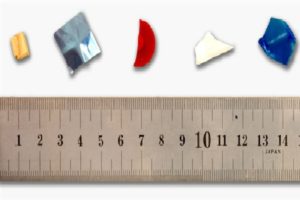 The investigation phase takes place whenever a foreign object contamination occurs, despite the prevention and detection procedures. Its objective will be to find out as much information as possible regarding the three W’s (what caused the contamination, when it happened and why) and make the necessary corrections to the management plan to prevent it from happening again.
The investigation phase takes place whenever a foreign object contamination occurs, despite the prevention and detection procedures. Its objective will be to find out as much information as possible regarding the three W’s (what caused the contamination, when it happened and why) and make the necessary corrections to the management plan to prevent it from happening again.
For more details on how to find out the causes of food safety incident, read our article on the most powerful way to perform a root cause analysis. The first step will be to get hold of the foreign object itself and examine it with microscopy and – if the substance is unknown – mass spectrometry. Pictures should always include a ruler to give a clear idea of actual size. A thorough examination will help find out not only what material it is, but also at what point of the supply chain the contamination happened. For example, particular scratches on a glass fragment could be typical of home glassware, indicating that the contamination occurred at the consumers’ home. Or, the modifications the object went through can indicate what processes the object was subjected to and help find out at what step it entered the processing line.
Conclusion
There is no prevention or detection method that works for any type of material in any scenario. The most effective way will be to use the right combination of methods, at the right points of the processing line. The last prevention and detection method we will mention is the human eye. Staff awareness of the importance of prevention procedures and their adherence to them will make any combination of detection methods much more effective and avoid potentially costly recalls.
Training on Foreign Body Prevention
All GFSI-guidelines acquire that people are trained. Therefor we all provide a lot of trainings on our CCP’s and OPRP’s. After following the training the people understand the meaning of their CCP and OPRP and how to act. However, as mentioned above focusing only on CCP’s and ORPR’s isn’t going to solve the issues we have with foreign body in products. Next to this, often after following a training you learned a lot about WHY it is so important that you take action. On the other hand, most of the courses don’t provide you the information of HOW to improve your system. And that’s exactly the difference of all the courses of Food Safety Experts and all the other courses you can find. We, at Food Safety Experts, focus on the HOW. This will give you a lot of tools to implement and improve your situation.
Check out our video lesson for only $14. You will have one year access to the video lesson. This will give you the time to implement what you have learned. You can watch the video lesson as often as you would like to. Next to this, you will receive a certificate that you followed a training on Foreign Object Management. For more information: A Successful Approach To Foreign Object Management
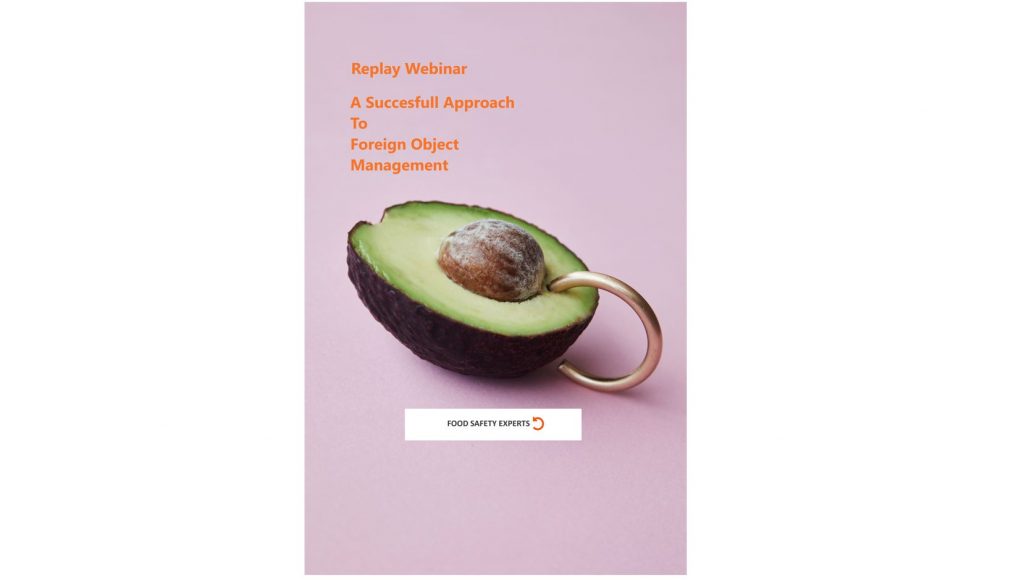
QFS Mastery Program
At Food Safety Experts we have our QFS Mastery Program. This Program contains 24 modules with different topics related to food safety. And Foreign Body in Product is one of the modules. In this module you will receive ± 2.5 hours of video lessons on HOW to Improve your Foreign Body Management System and ± 10 downloads that you can implement in your organization.
This Program will give you a huge boost as a professional and for your company. For more information, please visit our website QFS Mastery Program
Food Safety Experts Services
Other interesting services of Food Safety Experts:
QFS Mastery Module Physical Contaminants
Blogs Food Safety Experts
Other interesting blogs of Food Safety Experts:
Food import & export between China and the EU
What is Food Fraud and Prevention Program

